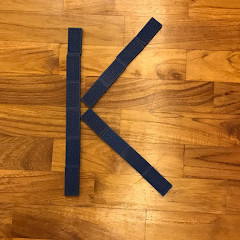Reviews — 8





You can take train to dead railway and stop by this station. I really impressed on railway and natural around. It’s beautiful. You should visit ❤️

Beautiful little crossing. The view from the train must be too, but didn't go on it. During holidays it is popular with visitors taking pictures even on the track. Train will stop to make sure track is cleared from visitors and then pass by. The railway cave is at the other end of the track. There are stalls for souvenirs and food.




Instagrammable place for great pictures with the train on the old tracks, old wooden bridge, hugging the mountain nearby the river.


This area was the hardest point to build a railroad. Due to the curving paths along the hills traversing steep cliffs. Parallel to the Kwai Noi River. it has to use transport equipment, supplies, and military personnel to reinforce the Burmese side to complete quickly Thus making this point the prisoners of war died most of the construction of this railway line, about 1,000 people, it is the longest bridge across the abyss of this line. The bridge was constructed using wood.













































Thamkra Sae is located in Kanchanaburi. Historical place during WWII
Small cave close to railway. passenger can touch the cave inside from train. Bridge looks terrific but work perfectly, nice river scenery
Small cave close to railway. passenger can touch the cave inside from train. Bridge looks terrific but work perfectly, nice river scenery







historical place of Kanchanaburi to visit to see the train along the Khwae river. Sai Yok District. See the history from pieces of rocks through time.

















Death Railway as it became known, was a strategic railway planned by the Japanese, which began from Nong Pla Duk Station in Amphoe Ban Pong, Ratchaburi and ran via Kanchanaburi across the Khwae Yai River, westbound to the Three Pagodas Pass, to end at Thanbuyuzayat in Burma. ( Now Myanmar ). The total distance within Thailand was 300 kilometres taking only one year to complete from October 1942 to December 1943. After the war, some parts of the tracks were demolished and some submerged under the lake of the Khao Laem Dam project.
Consequently pretty much all the sights in and around Kanchanaburi are directly related to World War 2. The museums are dusty and looking tired now, except for the Thailand to Burma Railway Centre, which gives a good insight into the Death Railway and its history. There are also two war cemeteries, the most moving of which is the Kanchanaburi War Cemetery, this can be found in Saeng Chuto road and is named Don Rak Cemetery almost opposite Kanchanaburi Railway Station.
The actual River Kwai bridge materials were brought from Java by the Imperial Japanese Army during their occupation of Thailand. In 1945 the bridge was bombed several times and was only rebuilt after the war - the curved portions of the bridge are original. The first version of the bridge, completed in February 1943 was all wood. In April of the same year, a bridge of steel was constructed. The strategic objective of the railway was to secure an alternative supply route for the Japanese conquest of Burma.
Roughly two thirds of the railway runs through Thailand. Much of the railway was built in difficult terrain that requires high bridges and deep mountain cuttings. The rails were finally joined 37 kilometres south of the Three Pagodas Pass. The River Kwai Bridge was in use for 20 months before Allied bombers bombed it in 1945. The Japanese even tied Allied POW’s on the bridge to discourage Allied bombing. Only one POW was known to have escaped, a Briton who took refuge among the pro-British Karen guerrillas. Although the number of POW’s who died during the Japanese occupation is a sad and horrible part of this war, the figure for the labourers, many from Thailand, Burma, Malaysia, Singapore and Indonesia are even worse. It is estimated that 90,000 to 100,000 Asians died.
As I guessed at the River Kwae Bridge station there were many tourists ready and waiting to board the train. They paid no attention to seating numbers, they just boarded and took any seats that would give them a good viewpoint of the viaduct. So be warned about this free - for - all, especially on a weekend when special tourist trains with observation coaches and Air Conditioned coaches are used. The journey to Wang Po Viaduct was longer than I expected. Almost two hours and then the train slowed down to nearly a crawl, it had finally reached the Viaduct. The view over the river at this point is beautiful but the viaduct was not as long as I thought it would have been. I guess to the men that built it and in those conditions it probably felt too long. From the train you cannot apprehend the construction of the bridge or viaduct, clinging to the mountainous walls as it does. I feel the best bet to take all this area in, is to drive to Tham Krasae station by taxi / car or coach, before any arrival of any train ( so that you can photograph as it travels over this section ).
Consequently pretty much all the sights in and around Kanchanaburi are directly related to World War 2. The museums are dusty and looking tired now, except for the Thailand to Burma Railway Centre, which gives a good insight into the Death Railway and its history. There are also two war cemeteries, the most moving of which is the Kanchanaburi War Cemetery, this can be found in Saeng Chuto road and is named Don Rak Cemetery almost opposite Kanchanaburi Railway Station.
The actual River Kwai bridge materials were brought from Java by the Imperial Japanese Army during their occupation of Thailand. In 1945 the bridge was bombed several times and was only rebuilt after the war - the curved portions of the bridge are original. The first version of the bridge, completed in February 1943 was all wood. In April of the same year, a bridge of steel was constructed. The strategic objective of the railway was to secure an alternative supply route for the Japanese conquest of Burma.
Roughly two thirds of the railway runs through Thailand. Much of the railway was built in difficult terrain that requires high bridges and deep mountain cuttings. The rails were finally joined 37 kilometres south of the Three Pagodas Pass. The River Kwai Bridge was in use for 20 months before Allied bombers bombed it in 1945. The Japanese even tied Allied POW’s on the bridge to discourage Allied bombing. Only one POW was known to have escaped, a Briton who took refuge among the pro-British Karen guerrillas. Although the number of POW’s who died during the Japanese occupation is a sad and horrible part of this war, the figure for the labourers, many from Thailand, Burma, Malaysia, Singapore and Indonesia are even worse. It is estimated that 90,000 to 100,000 Asians died.
As I guessed at the River Kwae Bridge station there were many tourists ready and waiting to board the train. They paid no attention to seating numbers, they just boarded and took any seats that would give them a good viewpoint of the viaduct. So be warned about this free - for - all, especially on a weekend when special tourist trains with observation coaches and Air Conditioned coaches are used. The journey to Wang Po Viaduct was longer than I expected. Almost two hours and then the train slowed down to nearly a crawl, it had finally reached the Viaduct. The view over the river at this point is beautiful but the viaduct was not as long as I thought it would have been. I guess to the men that built it and in those conditions it probably felt too long. From the train you cannot apprehend the construction of the bridge or viaduct, clinging to the mountainous walls as it does. I feel the best bet to take all this area in, is to drive to Tham Krasae station by taxi / car or coach, before any arrival of any train ( so that you can photograph as it travels over this section ).





Definitely worth the 3 hour journey by car from Bangkok! My driver dropped us off at this location while we took a slow 2 hour train ride to death railway station.